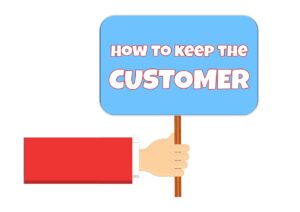Most business owners find that having tips and examples are useful while learning how to build a business system. Creating more effective business systems and processes can be a challenging task. Here are some practical tips and examples to help you get started.
Steps on How to Build a Business System -Tips
The 5 high level steps you should follow to build a business system follow the acronym IDAEP:
How to Build a Business System – IDENTIFY areas that need improvement:
Begin by analyzing your business operations to identify areas that need improvement. Look for inefficiencies, bottlenecks, and areas where tasks are being duplicated or performed manually.
DEFINE clear procedures:
Once you have identified areas that need improvement, define clear procedures for each task or process. This will help ensure that tasks are completed consistently to your specified standard.

AUTOMATE where possible:
Look for opportunities to automate tasks and processes. Automation can save time and reduce errors, freeing up time for more important tasks.
EMPLOYEE training:
Ensure that your employees are trained on the new procedures and systems. This will help ensure that they are following the correct procedures and using the new systems correctly.
PERFORMANCE – Measure and analyze:
Implement systems to measure and analyze performance metrics. This will help you identify areas where your systems and processes are working well and areas that need improvement.
Examples: How to Build a Business System
There are several examples of business systems that can be used to bring order to various areas of a business. Note that not all of them are critical to the running of a successful business.
There are at least 6-7 management systems that are central to a business – strategic, marketing, sales, human resources, financial, administrative and operations. Some businesses prefer to combine marketing and sales. Some systems like operations may be made up of more than one system.
Choose systems that are meaningful to your business, and look for software that can provide the benefits you desire to have. The examples provided below are just that – examples. Do your own research as well. Take a look at 5 core systems below:
Accounting and Financial System
Consider implementing an accounting and financial system such as QuickBooks or Xero to streamline your financial operations. This can help you manage your finances, including budgeting, billing, invoicing, expenses, and financial reporting.
These are software systems that are ready to use. The alternative is to develop a customer solution for your business. Whichever one you use, the important thing is that you follow the processes you have developed..
Inventory Management System
This falls under Operations. Create a custom system to track procurement, logistics , inventory levels, manage your supply chain, and reduce inventory costs. Software examples include SAP or Oracle.
Human Resources System
A human resources system will help you to manage employee information, track attendance, manage payroll, and automate HR processes such as tracking employee performance, setting goals, and providing regular feedback.
Customer Relationship Management Systems
These touch marketing, sales and operations. As a business grows, it quickly becomes evident that using sticky notes for notes of customer inquiries, orders and scheduling details is not a viable option. Sticky notes get misplaced and are not easy to file!
Implementing a customer relationship management system (CRM) becomes necessary before chaos sets into the business. However, selecting a good CRM that suits the needs of your business should be done carefully by considering certain criteria before a decision is made.
Project Management System
Many businesses find that implementing a project management system such as Trello or Asana to manage projects helpful. These software also help with task management, time tracking, and collaboration. This system engages, strategic management, HR, operations, and financials.
Communication System
Internal and external communication in a business can get blurry very quickly and clarity diminished as lines of communication decrease.
Implementing a communication system such as Slack or Microsoft Teams to manage internal and external communications, including email, messaging, and video conferencing are useful tools that may be found in a communication system.
By implementing these systems and processes, you can create a more effective and efficient business operation that will help you achieve your goals and grow your business.
8 Other Examples
Social Media Management System: A social media management system such as Hootsuite or Sprout Social can be used to manage your social media accounts, schedule posts, and track engagement.
Email Marketing System: Implement an email marketing system such as Mailchimp or Constant Contact to manage your email marketing campaigns, track open and click-through rates, and automate email sequences.
Workflow Automation System: Implement a workflow automation system such as Zapier or IFTTT to automate repetitive tasks and streamline workflows across different systems and applications. Get 3rd party assistance if necessary.
E-commerce System: Implement an e-commerce system such as Shopify or WooCommerce to manage your online store, process payments, and track sales. Getting help with the setup is necessary.
Document Management System: Having a document management system such as Google Drive or Dropbox to manage and share documents and files across your business is an absolute “must have”. Start simple
Appointment Scheduling System: Implement an appointment scheduling system such as Acuity or Calendly to manage client appointments and schedule meetings.
Other Tips
Here are some more tips and examples for creating effective systems and processes in your small business:

Focus on the customer: Keep your customers in mind when developing your systems and processes.
Design your processes with the customer in mind to ensure a positive experience, and be responsive to feedback to continuously improve your customer service.
Standardize your processes: Develop standard procedures for your key business processes, such as sales, customer service, and inventory management.
This will help ensure that everyone on your team follows the same steps and helps maintain consistency across your organization.
Continuously monitor and evaluate: Continuously monitor your business systems and processes to identify areas for improvement. Solicit feedback from employees and customers, and use analytics to measure performance and identify bottlenecks.
Use data to make decisions: Use data to make informed decisions about your business operations. Analyze your business data to identify trends, opportunities, and areas for improvement.
Streamline your workflows: Look for ways to streamline your workflows by eliminating unnecessary steps or combining tasks. This will help reduce the time it takes to complete tasks and improve efficiency.
Get everyone on board: To ensure the success of your new systems and processes, it’s important to get everyone on board. Train your employees on the new procedures and systems, and communicate the benefits of the changes to help encourage buy-in.
By implementing these tips and examples, you can create more effective and efficient systems and processes in your small business, leading to increased productivity, cost savings, and improved customer satisfaction.
For assistance, CONTACT US TODAY
Conclusion
Now that you understand how to build a business system, creating effective systems and processes is essential for small businesses to thrive in today’s competitive marketplace.
By implementing the right systems and processes, businesses can streamline their operations, improve efficiency, reduce costs, and provide a better customer experience.
From automating repetitive tasks and managing inventory to tracking employee performance and customer feedback, there are a variety of systems and processes that small businesses can implement to optimize their operations.
By continuously evaluating and improving their systems and processes, small businesses can stay agile, adaptable, and better equipped to meet the evolving needs of their customers and stakeholders.
Related Articles
- Create Business Systems – Learn How to Move From Chaos to Clarity
- Types of Business Systems – How to Apply to Small Businesses
- What Causes Chaos in Business Operations – Time to Stop It
- What is a Business Management System – Think Business Goals
- What is a Business System – How to Create Consistency
- What is the Difference Between Systems and Processes
- Customer Experience Journey Map – Walk in Their Shoes
References
Hubspot. The 7 Systems That Every Business Must Have To Be Successful https://cdn2.hubspot.net/hubfs/5078742/The-7-Systems-That-Every-Business-Must-Have-To-Be-Successful-V4.pdf


